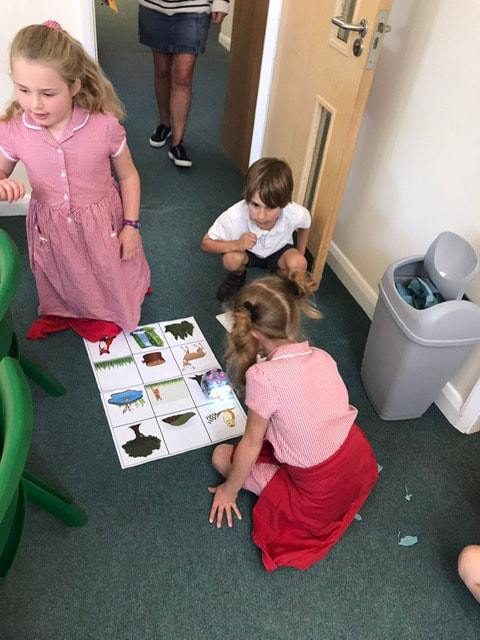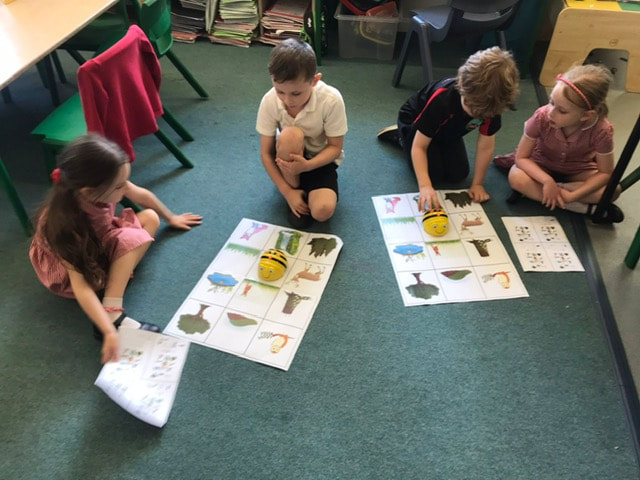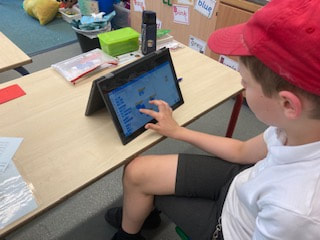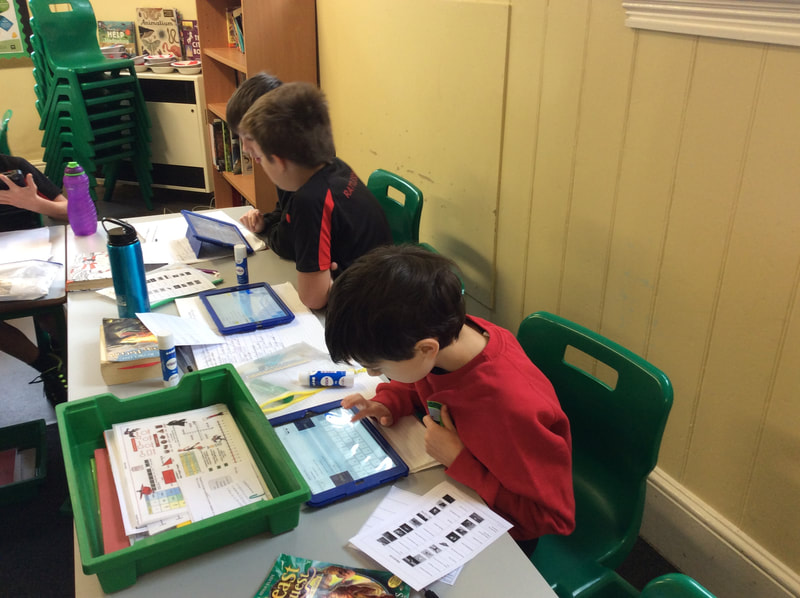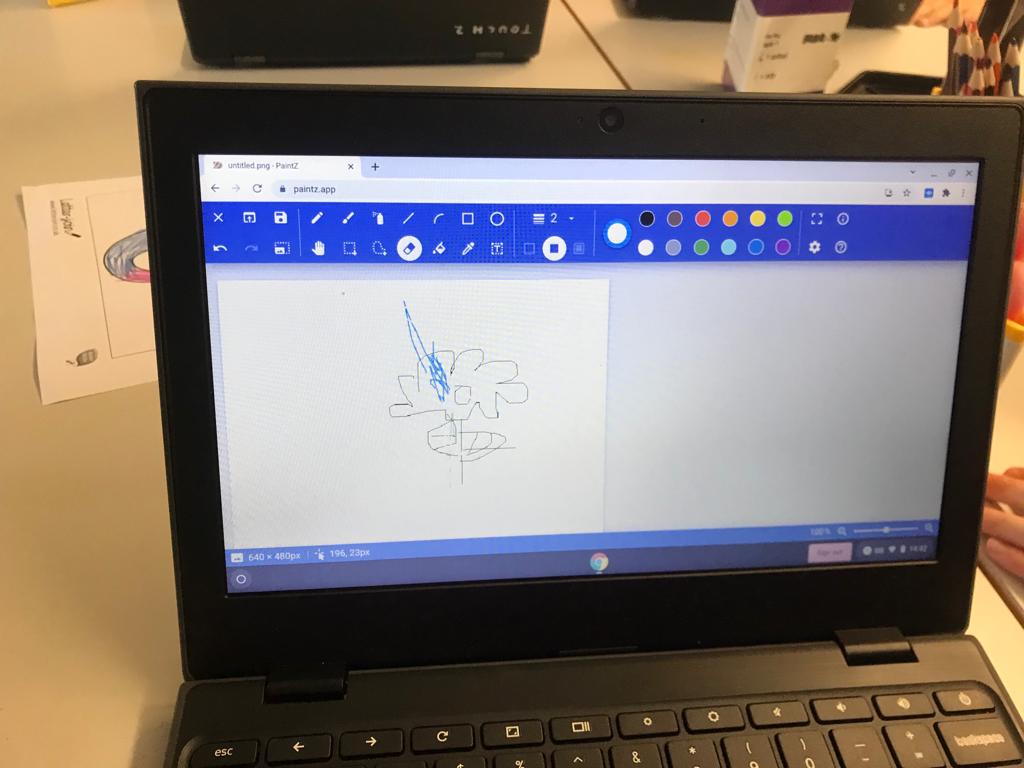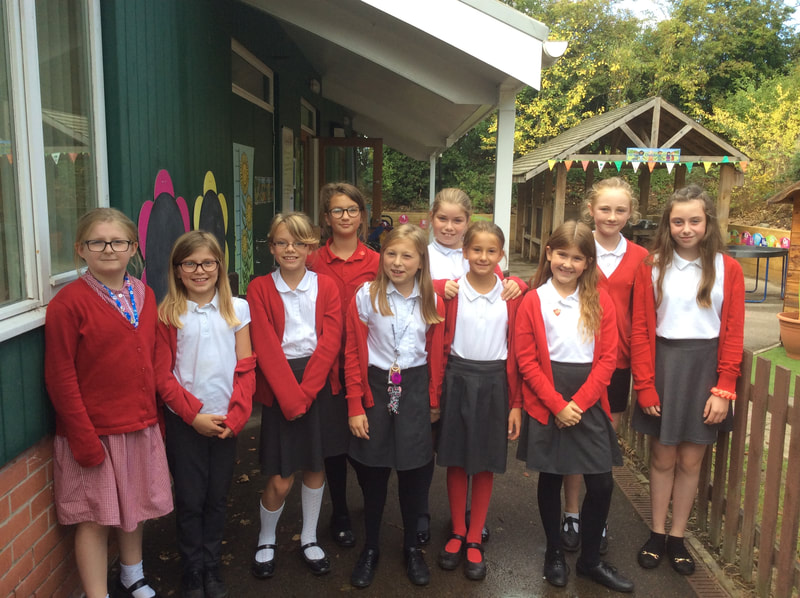Intent
Through our computing curriculum at Rattlesden primary Academy, we aim to give our pupils the life-skills that will enable them to embrace and utilise new technology in a socially responsible, positive and safe way in order to flourish in an ever-changing digital world. We want our pupils to be responsible digital citizens and be able to thrive in the 21st century workplace and to know the career opportunities that will be open to them if they study computing.
We want our pupils to become confident and competent users of a range of computing technologies. Our intention is that computing also supports children’s creativity, resilience, critical thinking skills and cross-curricular learning to engage children and enrich their experiences in school and to ensure that our curriculum is accessible to every child.
Our computing curriculum will enable our pupils to gain key knowledge and skills in the three main areas of computing: computer science (programming and understanding how digital systems work), information technology (using computer systems to store, retrieve and send information) and digital literacy (evaluating digital content and using technology safely and respectfully).
By the time they leave Rattlesden, we want all our pupils to be flexible, creative, responsible and confident users of technology, who are able to choose the best tool to fulfil the task set by teachers.
Implementation
At Rattlesden Primary Academy, computing is planned and taught using a blocked curriculum approach. This ensures children are able to develop depth in their knowledge and skills over the duration of each of their computing topics and to ensure progression in their knowledge and skills throughout their time at Rattlesden, which is mapped using our progression document. Teachers use the ‘EdTech’ scheme of work, developed by the National Centre for Computing Education (NCCE), as a starting point for their planning of their computing lessons, which are often richly linked to engaging contexts in other subjects and topics. Employing cross-curricular links motivates pupils and supports them to make connections and remember the steps they have been taught. If internet safety can not be linked to the planned units, additional internet safety lessons will be taught alongside to ensure coverage. These may be as part of the computing or PSHE curriculum, depending on the focus.
The implementation of our curriculum ensures a balanced coverage of the three main strands of computing: computer science (children will understand and apply the fundamental principles and concepts of computer science, including abstraction, logic, algorithms and data representation. They will also analyse problems to computational terms, and have repeated practical experience of writing computer programs in order to solve such problems); information technology (children learn to use and express themselves and develop their ideas through ICT for example writing and presenting as well as exploring art and design using multimedia); and digital literacy (children develop practical skills in the safe use of ICT and the ability to apply these skills to solving relevant, worthwhile problems for example understanding safe use of internet, networks and email). The children will have experiences of all three strands in each year group, but the subject knowledge imparted becomes increasingly specific and in depth, with more complex skills being taught, ensuring that learning is built upon and children can independently make choices about how to achieve specific tasks.
We have a class set of ipads and Chromebooks to ensure that all year groups have the opportunity to use a range of devices, apps and software for many purposes across the wider curriculum, as well as in discrete computing lessons. The computing curriculum is also enhanced by class visits to BT Adastral Park for sessions led by specialists, and enabling the children access to specialist equipment.
Our children in Early Years, will be exposed to the understanding of internet safety as they explore the world around them and how technology is an everyday part of their learning and understanding of the world. In Key Stage 1 the children will learn what algorithms are, taught to create and debug simple programs and use logical reasoning to predict the behaviour of simple programs. They will be shown how to use a range of technology purposefully to create, organise, store, manipulate and retrieve digital content as well as recognise common uses of information technology beyond school. They will be taught to use technology safely and respectfully, keeping personal information private; identify where to go for help and support when they have concerns about content or contact on the internet or other online technologies. In Key Stage 2 the children will design, write and debug programs that accomplish specific goals and solve problems by decomposing them into smaller parts. They will use sequence, selection, and repetition in programs, use logical reasoning to explain how some simple algorithms work and correct errors in algorithms and programs. Children will be taught to understand computer networks, including the internet, and the opportunities they offer for communication and collaboration. They will use search technologies effectively, learn to appreciate how results are selected and ranked, and be discerning in evaluating digital content. Children will be taught to select, use and combine a variety of software (including internet services) on a range of digital devices to create a range of programs, systems and content that accomplish given goals. They will use technology safely, respectfully and responsibly; recognise acceptable/unacceptable behaviour; identify a range of ways to report concerns about content and contact.
There is much emphasis placed on the teaching of online safety at Rattlesden to ensure children become good digital citizens both within our local community and globally as they become adults. It is taught through our computing and PSHE curriculum, mapped using ‘Teaching for a Connected World’ to ensure coverage and progression in each key area of online reputation, privacy and security, managing online information, copyright and ownership, health, well-being and lifestyle, self-image and identity and online relationships and bullying.
Impact
The implementation of our curriculum results in a fun, engaging, and high-quality computing education and ensures when children leave Rattlesden, they are digitally literate, well- equipped for secondary school and able to join the rest of the world on its digital platform, in a safe and responsible way, especially when using the internet. It will also provide the building blocks to pursue a wide range of interests and vocations in the next stages of their lives and apply their skills in different challenges ahead of them.
The quality of children’s learning is evident and monitored through class scrapbooks, where children annotate and have an opportunity to discuss their learning. This evidence is used to inform teacher assessment against intended outcomes from our progression document (which is differentiated into year groups), inform future planning, ensure all pupils make good progress and to inform end of year academic levels . This approach also ensures that there is progression of skills and knowledge as the children move through the school.
Through our computing curriculum at Rattlesden primary Academy, we aim to give our pupils the life-skills that will enable them to embrace and utilise new technology in a socially responsible, positive and safe way in order to flourish in an ever-changing digital world. We want our pupils to be responsible digital citizens and be able to thrive in the 21st century workplace and to know the career opportunities that will be open to them if they study computing.
We want our pupils to become confident and competent users of a range of computing technologies. Our intention is that computing also supports children’s creativity, resilience, critical thinking skills and cross-curricular learning to engage children and enrich their experiences in school and to ensure that our curriculum is accessible to every child.
Our computing curriculum will enable our pupils to gain key knowledge and skills in the three main areas of computing: computer science (programming and understanding how digital systems work), information technology (using computer systems to store, retrieve and send information) and digital literacy (evaluating digital content and using technology safely and respectfully).
By the time they leave Rattlesden, we want all our pupils to be flexible, creative, responsible and confident users of technology, who are able to choose the best tool to fulfil the task set by teachers.
Implementation
At Rattlesden Primary Academy, computing is planned and taught using a blocked curriculum approach. This ensures children are able to develop depth in their knowledge and skills over the duration of each of their computing topics and to ensure progression in their knowledge and skills throughout their time at Rattlesden, which is mapped using our progression document. Teachers use the ‘EdTech’ scheme of work, developed by the National Centre for Computing Education (NCCE), as a starting point for their planning of their computing lessons, which are often richly linked to engaging contexts in other subjects and topics. Employing cross-curricular links motivates pupils and supports them to make connections and remember the steps they have been taught. If internet safety can not be linked to the planned units, additional internet safety lessons will be taught alongside to ensure coverage. These may be as part of the computing or PSHE curriculum, depending on the focus.
The implementation of our curriculum ensures a balanced coverage of the three main strands of computing: computer science (children will understand and apply the fundamental principles and concepts of computer science, including abstraction, logic, algorithms and data representation. They will also analyse problems to computational terms, and have repeated practical experience of writing computer programs in order to solve such problems); information technology (children learn to use and express themselves and develop their ideas through ICT for example writing and presenting as well as exploring art and design using multimedia); and digital literacy (children develop practical skills in the safe use of ICT and the ability to apply these skills to solving relevant, worthwhile problems for example understanding safe use of internet, networks and email). The children will have experiences of all three strands in each year group, but the subject knowledge imparted becomes increasingly specific and in depth, with more complex skills being taught, ensuring that learning is built upon and children can independently make choices about how to achieve specific tasks.
We have a class set of ipads and Chromebooks to ensure that all year groups have the opportunity to use a range of devices, apps and software for many purposes across the wider curriculum, as well as in discrete computing lessons. The computing curriculum is also enhanced by class visits to BT Adastral Park for sessions led by specialists, and enabling the children access to specialist equipment.
Our children in Early Years, will be exposed to the understanding of internet safety as they explore the world around them and how technology is an everyday part of their learning and understanding of the world. In Key Stage 1 the children will learn what algorithms are, taught to create and debug simple programs and use logical reasoning to predict the behaviour of simple programs. They will be shown how to use a range of technology purposefully to create, organise, store, manipulate and retrieve digital content as well as recognise common uses of information technology beyond school. They will be taught to use technology safely and respectfully, keeping personal information private; identify where to go for help and support when they have concerns about content or contact on the internet or other online technologies. In Key Stage 2 the children will design, write and debug programs that accomplish specific goals and solve problems by decomposing them into smaller parts. They will use sequence, selection, and repetition in programs, use logical reasoning to explain how some simple algorithms work and correct errors in algorithms and programs. Children will be taught to understand computer networks, including the internet, and the opportunities they offer for communication and collaboration. They will use search technologies effectively, learn to appreciate how results are selected and ranked, and be discerning in evaluating digital content. Children will be taught to select, use and combine a variety of software (including internet services) on a range of digital devices to create a range of programs, systems and content that accomplish given goals. They will use technology safely, respectfully and responsibly; recognise acceptable/unacceptable behaviour; identify a range of ways to report concerns about content and contact.
There is much emphasis placed on the teaching of online safety at Rattlesden to ensure children become good digital citizens both within our local community and globally as they become adults. It is taught through our computing and PSHE curriculum, mapped using ‘Teaching for a Connected World’ to ensure coverage and progression in each key area of online reputation, privacy and security, managing online information, copyright and ownership, health, well-being and lifestyle, self-image and identity and online relationships and bullying.
Impact
The implementation of our curriculum results in a fun, engaging, and high-quality computing education and ensures when children leave Rattlesden, they are digitally literate, well- equipped for secondary school and able to join the rest of the world on its digital platform, in a safe and responsible way, especially when using the internet. It will also provide the building blocks to pursue a wide range of interests and vocations in the next stages of their lives and apply their skills in different challenges ahead of them.
The quality of children’s learning is evident and monitored through class scrapbooks, where children annotate and have an opportunity to discuss their learning. This evidence is used to inform teacher assessment against intended outcomes from our progression document (which is differentiated into year groups), inform future planning, ensure all pupils make good progress and to inform end of year academic levels . This approach also ensures that there is progression of skills and knowledge as the children move through the school.
Some websites to use at home:
Scratch Coding online (KS2)
Coding playground
Microbit coding (KS2)
BBC Bitesize Computing (lots of information and videos)
Sketchpad (online art program for KS2)
Tinkercad (online 3D art program for Years 5 and 6)
J2 data (for KS1 and Year 3)
Google programs (like Google Docs, sheets or slides) are great tools to use to present information for KS2.
Taking and editing photos and videos is also a great way for the children to improve their computing skills too!
See our online safety page for lots of links!
Also try these apps on an ipad or iphone:
Coding: Beebot (EY and KS1), Scratch Junior (Years 2 and 3) and LightBot (KS2)
Art: DoInk, Tux Paint and Scibiloo (great for KS1)
Filming: imovie, stickbot, stopmotion
Stop Frame Animation in Year 1 and 2
Programming in Year 3 and 4 using Scratch to create mazes and in Year 1 and 2 using Beebots
Our e-safety cadets deliver key messages to the whole school about how they can be safer on line through presentations and workshops.
All our classes in Key Stage 2 visit BT Adastral Park in Martlesham to take part in programming workshops.
Find Us |
|
Website by lizhawkins.co.uk







